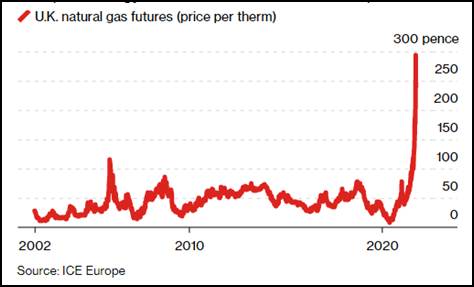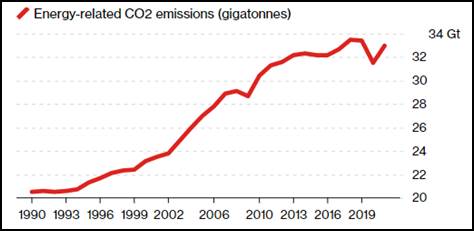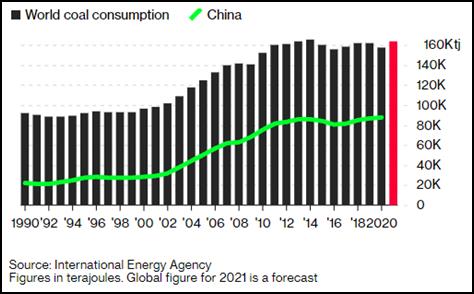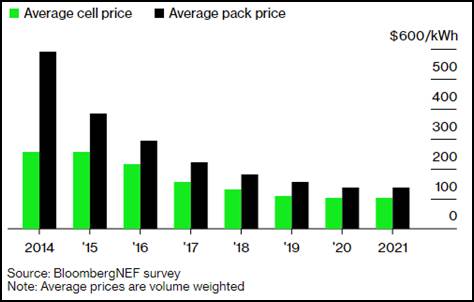What’s going on with the world’s energy supply? Higher oil prices are pushing gasoline prices up to their highest levels in seven years. Demand for coal is surging to record levels across the globe. And, in Europe, natural gas prices are up 500 percent, as growing wind and solar production can’t keep pace with early retirement of coal and nuclear power plants.
At the current rate, global consumption of coal, oil and natural gas is expected to hit an all-time high by mid-2022, the International Energy Agency reports. Global warming emissions associated with this fossil energy use are also on the rise. Carbon dioxide emissions are on track to post their second largest annual increase ever this year, reversing most of the emissions decline during the pandemic lockdowns of 2020. Record emissions are expected by 2023.



With another round of climate negotiations convening in Glasgow, Scotland, next month, what signals should policymakers take from these shudders in global energy markets?
- The pandemic has distorted current energy market trends. Energy companies were already scaling back investments in fossil fuels when the pandemic hit in early 2020. Then, in August 2021, Hurricane Ida shut down 90 percent of production in the Gulf of Mexico, sending shock waves throughout global petroleum markets. Now, the steep global economic recovery has caught many oil & gas producers flatfooted, unable to ramp up production quickly enough to keep pace with surging fuel demand.
- Policy mismatches still exist. Some countries are phasing out old energy supplies faster than they are bringing new ones on-line. Germany, for example, decided after Japan’s Fukushima nuclear disaster in 2011 to phase out all of its nuclear plants by 2022, now just months away. With coal also taken off the table to reduce emissions, natural gas – mainly from Russia – is the only spot fuel left to bridge the short-term supply gap in Germany and many other EU countries.
- Is the answer to slow down renewables or speed them up? Some people argue that rising fuel costs and growing supply shortages are living proof that current climate policies aren’t working, or are at least getting ahead of the rate of change taking place in global energy markets. In particular, utilities have not deployed nearly enough grid-connected batteries to replace natural gas-fired plants during peak-demand periods, causing big spikes in spot pricing. However, with global CO2 emissions still on the rise, stoking fossil energy use is, at best, a stopgap measure that only increases the need for more aggressive emissions controls over time.
In short, the Solar Revolution is still in its infancy and will take some time to mature. Fossil fuels, which led the Industrial Revolution for 250 years, still need a few more decades to fade from the scene, death throes and all.
US Infrastructure Bill Still Up for Grabs
If anything, the world’s current energy woes drive home the need to coordinate a global shift to renewables along with revamping national electricity grids and boosting energy storage to replace natural gas as a peaking fuel. In the United States, two infrastructure bills remain mired in Congress, many months after they were introduced. Embedded in the larger $3.5-trillion bill are two core climate funding commitments: $150 billion for a Clean Electricity Program to phase out utilities’ use of fossil fuels by 2035, and $300 billion in tax incentives to increase household and industrial use of wind and solar and electric vehicles. By 2030, the goal is to double U.S. electricity production from non-carbon sources from 40 percent to 80 percent.
Other elements of this sweeping infrastructure bill may be pared back, or cut out entirely, in upcoming budget negotiations on Capitol Hill. These include:
- $30 billion for a “Green Bank” to help communities finance construction of solar arrays and electric vehicle charging stations.
- $30 billion to create a “Civilian Climate Corps” that would hire young adults to work in climate mitigation and adaptation, with half of the jobs coming from communities of color.
- And $10 billion to help rural electric cooperatives, which supply electricity to over 40 million people in rural communities, to ease any price spikes occurring from the switch from coal and other fossil fuels to wind, solar and other renewables.

If acting on climate change is important to you, now is the time to make your voice heard. Don’t be fooled by arguments that energy price spikes and dwindling investments in fossil fuels and are somehow the fault of renewables. On the contrary, longstanding vulnerabilities in the fossil energy supply chains and dependence on petrostates like Russia and Saudi Arabia have always plagued the fossil fuel industry and argue for a faster switch to carbon-free energy sources. Renewables and battery storage are making global electricity supply systems more resilient and reliable, not less, even if there are some growing pains along the way.
Fortunately, you don’t have to wait for the outcome of this global energy transition; you can help build it! You already have access to clean, affordable and reliable solar power to electrify your home and charge your electric vehicles.
Email us at info@solaflect.com, or give us a call at 802-649-3700 to build your plan for a carbon-free future. Together, the power is in our hands to make a difference!




